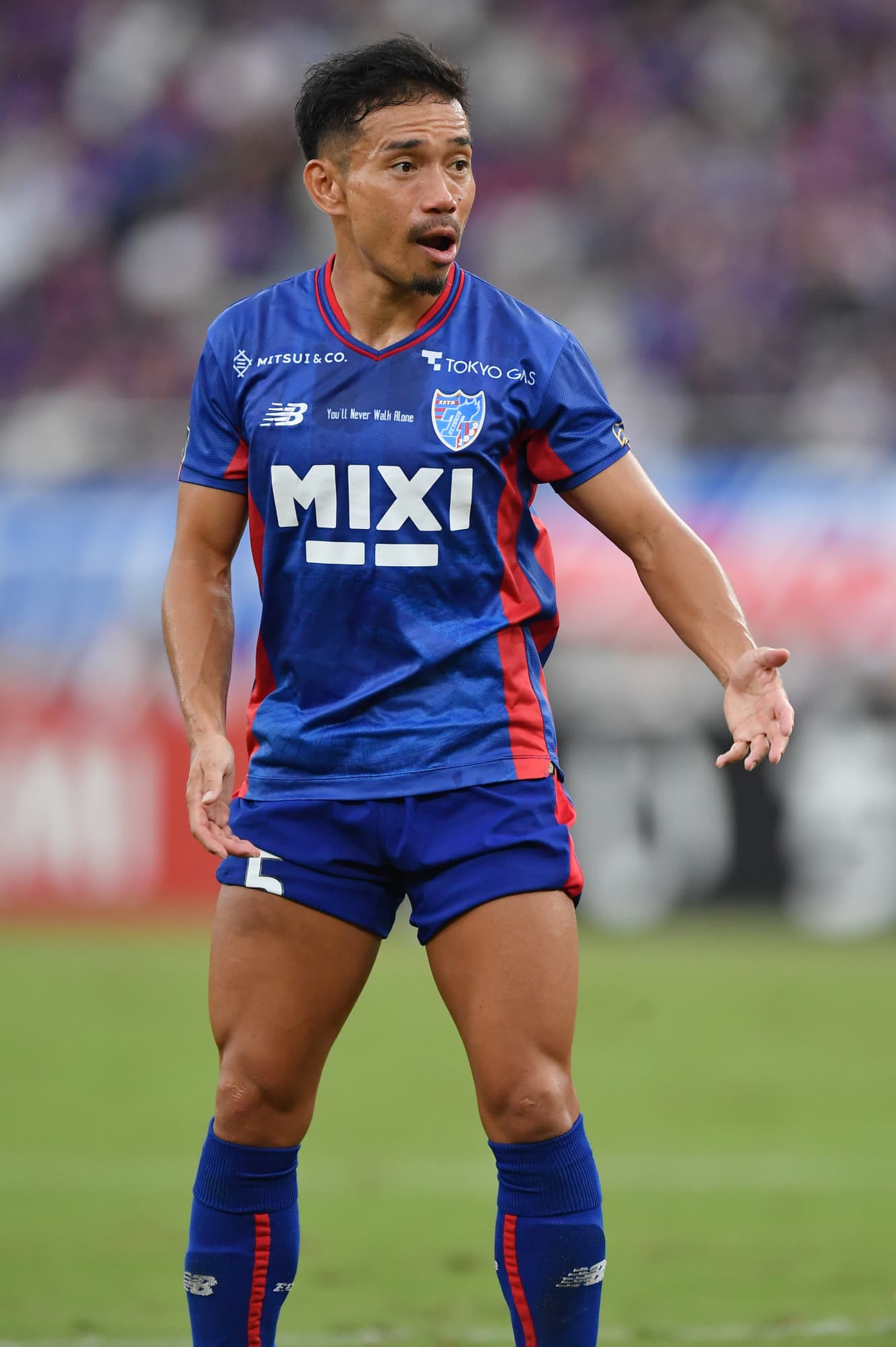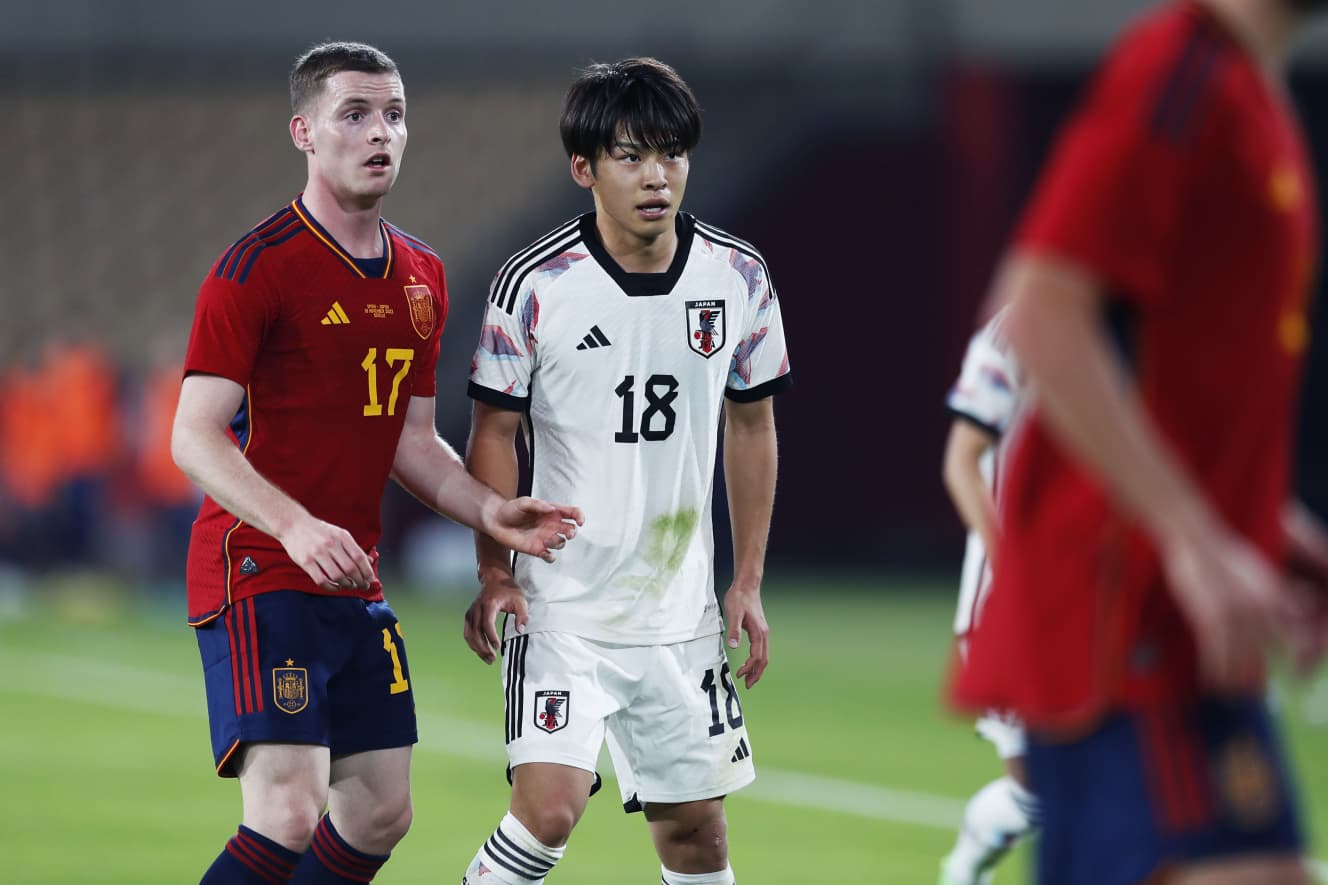Kubo Takefusa, Aya Suzuki, and others are called up to the A-team, but the real evaluation of the “Paris Olympics generation” remains uncertain for the next World Cup.
This year’s activities of Japan’s national team came to an end with the ’26 North and Central American World Cup (World Cup) Asia Second Round Qualifier against Syria in Jeddah on November 21.
The second Moriyasu Japan team has made tremendous progress since its inauguration in March, as the Japanese team dominated Syria 5-0 in this match as well. The second Moriyasu Japan team has been on a remarkable run of success since its inauguration in March.

Even in the absence of Kaoru Mitoma (26, Brighton) and Celtic players Kyogo Furuhashi (28) and Dainichi Maeda (26), other players have filled in well, and the absence of the mainstay of the team has not been felt. The team also showed flexibility in changing their basic lineup depending on the opponent and the situation. The depth of the players and the breadth of their game were something that did not exist during the first Moriyasu Japan period. It is safe to say that Japan’s captain, Wataru Endo (30, Liverpool), is now within reach of his stated goal of winning the World Cup in 2014.
The Japanese national team is indeed on the upswing, but it is not without its share of uncertainties. One concern is the upsurge of the younger generation.
The youngest player on the team at the 2010 World Cup in Qatar was 21-year-old Kubo Takefusa (Real Sociedad). Germany, against whom Japan played, had 19-year-old Jamal Musiala (Bayern), and Spain had Pedri (21, Barcelona) and Nico Williams (21, Athletic Bilbao), who were born in 2002, and Gabi (19, Barcelona), who was born in 2004. Gabi (19, Barcelona), born in 2004, were teenagers at the time.
In the Qatar World Cup, there were about 10% of the Paris Olympics generation born in 2001 or later, but Japan had only one player, Kubo. That is a major concern. For the association, the model pathway is ‘debut in the J-League at age 17 and promotion to Samurai Blue as a teenager. We believe we need to bring it closer to that.”
Koji Sorimachi, 59, chairman of the Japan Football Association’s technical committee, emphasized this at a football conference in January of this year.
However, only two members of the Paris Olympics generation have made their mark on the national team in the past year: goalkeeper Ayaen Suzuki (21, Sint-Troiden), who started against Syria, and Masahiro Hosoya (22, Kashiwa), who scored his first goal for the national team in that game.
Moriyasu, of course, is also focusing on bringing up young players, and in the March series, he selected Yoshifumi Bangunagande (22, FC Tokyo) as a candidate to succeed Yuto Nagatomo (37, FC Tokyo) at left back (SB), a position he had held for many years. He started against Colombia, but due to subsequent injuries, he was unable to establish himself. Promising right back Riku Handa (21, G Osaka) and aggressive volleyball player Sota Kawasaki (22, Kyoto) were also called up, but did not play. After all, the only members of the Paris Olympics generation who have been recognized as a definite asset to the A team are Kubo and Aya Suzuki. It can only be said that they are not good enough.

Hajime Moriyasu’s Tokyo Olympics generation (born in 1997 or later) make up the mainstay of the current Moriyasu Japan team: Itakura Koh (26, Borussia MG) and Tomiyasu Takehiro (25, Arsenal) are the mainstays of the DF line, Ao Tanaka (25, Düsseldorf) is the bolster, and second rowers Mitsumata and Do Kubo, and FWs Maeda and Kisei Ueda (25, Feyenoord).
Looking back, Tomiyasu was 19 and Doan was 20 when the first Moriyasu Japan team was formed in September 2006. Itakura and Yuta Nakayama (26, Huddersfield), who made their debut for the A team at Copa America (Brazil) in the summer of 2007, were 22. Dainichi Maeda and Kisei Ueda were 21 and 20 years old, respectively, and they had the fundamental strength to go head-to-head against the powerful South American nations of Colombia, Chile, and Bolivia.
Compared to them, the current Paris Olympics generation is considered by some to be growing at a slower pace. Takayuki Tateishi, 54, CEO of Sint-Troiden, which acquired three young players this summer, Aya Suzuki, Yoruchima Fujita (21), and Rihito Yamamoto (21), said, “The Paris Olympics generation is smaller than the Tokyo Olympics generation. That is why we have no choice but to give them experience in foreign leagues as soon as possible to speed up their development,” he said.
One of the reasons for the delay in raising the level of the Paris Olympics generation may be the COVID-19 crisis from ’20 to ’22. During that period, travel to and from abroad stopped, and the U-20 World Cup in 2009, in which players born in 2001 and later were supposed to participate, was cancelled.
Tomiyasu and Doan have made great progress by playing in the ’17 U-20 World Cup in South Korea, where they battled hard against powerful countries such as Italy and Uruguay.’ Hiroki Ito (24, Stuttgart), who participated in the ’19 U-20 World Cup in Poland, slipped into the Qatar World Cup, and Yusei Sugawara (23, AZ) and Takato Nakamura (23, Stade de Reims) are also becoming important assets since the second Moriyasu Japan was established.
As an island nation in the Far East, Japan could not easily travel to and from neighboring countries to play matches as in Europe. This was especially true for the COVID-19 crisis. That is why it is important to play serious matches at the World Championships for each age group. This year, Japan’s U-22 national team has played a number of friendlies against strong nations, but they are still not the same as official matches. Missing out on valuable opportunities may be a major stumbling block for the Paris Olympics generation.

Still, there are a number of athletes who are quick to take up challenges overseas at the individual level. Leading the list is Mitsuki Saito, 22, who plays for Sparta Rotterdam. He is currently out injured, but he started his European career in January 2009 with Lommel of Belgium’s second division, and a year and a half later moved up to the Dutch first division. Last season, he scored five goals in 20 games, and is now regarded as a key attacker in the team.
In January 2011, Tadato Suzuki (22, Bromby), hoping to catch up with Saito and overtake him, decided to challenge Europe. His first club was Strasbourg, a French first division club. He was expected to adapt quickly because he was playing for Eiji Kawashima’s club (40 at the time), but he was unable to get a chance to play, and last season he ended up scoring one goal in three games. In August, he moved to Denmark for a complete change of scenery. Although he has not yet earned a permanent place in the team, he scored two goals in the U-22 match against Argentina (Nihonpira) on November 18. His hard work on the defensive side of the ball and his intensity on the edge of the ball showed his growth as a player.
Kein Sato (22, Bremen) and Shio Fukuda (19, Borussia MG), who scored the first goal in the U-22 match against Argentina, chose to go to Europe instead of playing in the J-League. Sato came to Germany this summer from Meiji University. He is currently a member of the U-23 team, but he is excited about the prospect of playing at the top level soon. He is a speedy, dribbling winger who plays on the left side of the field, and is considered to be Kaoru Mitoma’s successor.
Kengo Nakamura (43, Kawasaki FRO), who coached Fukuda when he was a member of the U-17 national team, also described him as a “FW with tremendous potential. For now he is playing for the U-23 team, but with Itakura Koh at the same club, he is already acclimated to the environment. If he can continue to consistently build on his achievements, move up to the first team, and start playing in the first division of the German Bundesliga, it is not impossible that he will be a member of the A national team in no time.
With more and more players like them playing in Europe at a young age, it is unclear what the Japanese national team will look like in two and a half years’ time. In this sense, expectations are high, but in order to do so, the Paris Olympics generation must surely win a ticket to the Olympics.
The fourth-placed team will face an African team in a playoff, The fourth-placed team will go to a playoff against African teams, and if they win there, they will barely qualify for the main tournament. Japan was placed in the same group as Korea, China, and the UAE in the November 23rd draw. Japan was placed in the same group as Korea, China, and the UAE at the November 23rd draw, a tough group known as the “group of death,” and nothing can begin without a top-two finish. The future of the Paris Olympics generation will depend on whether or not they can survive the tough competition and make a breakthrough on the world stage.
They have gained momentum with a 5-2 win over Argentina in their most recent U-22 match, but when it comes to the real competition, the level of seriousness of the opponents will be completely different. If a number of players can produce results there, Moriyasu Japan’s problems with young players will be unfounded. I hope that they will be inspired to break through the status quo of having only Kubo and Aya Suzuki as the only players of the Paris Olympics generation.
Interview and text by Etsuko Motokawa: Etsuko Motokawa Photo by Etsuko Motokawa: aflo